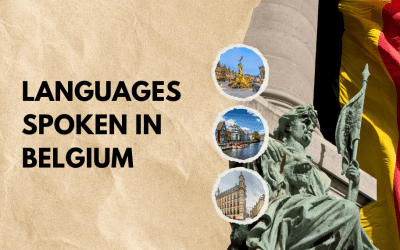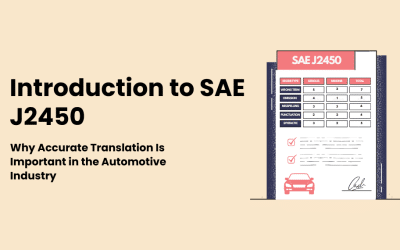Thinking of Portuguese eCommerce translation for your online store?
With approximately 50 million Internet users and a USD 17 billion revenue in 2019, Brazil has emerged as an eCommerce market that is hard to ignore.
If your company has already solidified its presence in more mature markets, then you should start thinking about the BRIC countries.
BRIC stands for Brazil, Russia, India, and China, comprises massively populated countries with expanding eCommerce markets and a growing middle classes.
Within BRIC, Brazil alone represents the fastest growing economy in South America.
Brazil is home to over 200 million people, making it the fifth most populated country and the eighth-largest GDP in the world.
If you want to succeed in this highly competitive marketplace, there are many factors to consider before making the final jump.
To succeed, you must carefully analyze everything from linguistics to cultural and consumer preferences.
In this blog, we will provide insight into Brazilian cultural values, language and consumer behavior to achieve the perfect Brazilian Portuguese localization.
Portuguese eCommerce Translation
Even though most Brazilians are somewhat familiar with English, over 99% of the population speaks Brazilian Portuguese. This is a different dialect from European Portuguese.
Brazilian Portuguese, influenced by foreign languages, defers mostly in terms of phonology, grammar, and vocabulary.
For instance, some words used today by Brazilians originate from West African Yoruba and native Tupi-guarani languages.
Other differences between Brazilian and European Portuguese include several verb tenses, such as você and seu, and pronouns.
If you want to tackle the Brazilian eCommerce market correctly, you need to make sure all your services are localized by a professional with an inside understanding of the industry and the language.
This includes translating your website, mobile app, customer service, and marketing in Portuguese. End-to-end translation of the entire eCommerce experience in Portuguese is essential for long term success.
You will need the help of a professional, native linguist to ensure that your eCommerce translations are culturally relevant.
A bad translation can mean loss of customer trust, poor brand image, and ultimately a international market failure for your business.
Consumer Values in Brazil

One of the most important factors to consider when localizing to a foreign country are the core values prevalent within that population.
By taking these into account, you will be able to tailor your marketing efforts to penetrate and succeed in that eCommerce market.
In a nutshell, Brazilian consumers are defined by the following characteristics:
- Price: Brazilians will often purchase a product based solely on the price. Most consumers shop on budgets and look for the cheapest one they can find.
- Appearances: The Brazilian culture puts appearances and ‘looking good’ first. If your product focuses on aesthetics, you’re off to a good start.
- Made in Brazil: Brazilians often choose products that are made within their own country. So if you’re able to locally source your product, that’s a big plus.
- Deals: Brazilians are quite frugal and prefer to save money for major purchases, like houses or cars. However, they will often choose a product if it offers a ‘deal’ when purchasing other items.
Date, Time, and Currency in Brazil

To correctly localize your online store for Brazil, you need to go beyond just Portuguese eCommerce translation.
- In the US, the date format is MM/DD/YYYY. In Brazil, it is DD/MM/YYYY.
If this is not followed, it could create confusion and errors in the reading of the day and month.
It could be disastrous for eCommerce businesses working with products with expiration dates or even for expected product delivery dates.
- Another format that is common in the country is (day) de (month) de (year), for example, 20 de Janeiro de 2020.
- Brazilians are also not familiar with AM and PM and prefer the 24-hour format.
- The Brazilian currency is known as the Brazilian Real (BRL).
- They adopted the European way of currency format, which means they use periods as thousands separators and commas instead of decimal points.
In English, you write $ 4,000.60 for example. In Brazilian Portuguese, you will use R$4.000,60 and in smaller amounts, you’ll only see commas, such as R$54,60.
Common Payment Methods in Brazil

According to The Paypers, online payments in Brazil are dominated by credit cards, which are used for 69% of all online payments.
However, around 30 percent of those cards are issued domestically, and they are only authorized to be used in Brazil.
Without a local business entity and merchant account, merchants from outside Brazil are unable to accept orders from many would-be customers.
If you are just starting out and don’t have the resources to start a local Brazilian office to partner with local banks. You need to find a partner with the capability to process local orders.
The second most popular option is Boleto Bancário, accounting for 24% of online purchases in Brazil.
The payment process for Boleto is essentially a cash payment. Customers place their orders online and receive a pre-filled bank slip.
Then, they go to the bank or other authorized processors like drugstores or post offices and pay for their purchase with cash.
Utilizing this payment method in your checkout process increases your chance of raising revenue from Brazilian customers.
Connect With Portuguese Customers In Their Native Languages.
Milestone helps you seamlessly translate content & localize your website, products, and services for more reach, better conversions, and greater sales
Images and Symbols

Some symbols and icons can carry a special cultural meaning for the Brazilian population.
Make sure you are familiar with them if you want to avoid major cultural blunders and inappropriate imagery.
- The Fig Sign: Made by wedging the thumb between the index and middle fingers and then closing the hand to make a fist. Even though it is an obscene gesture in many countries, the fig symbol is a good luck sign considered Brazil’s national symbol.
- Owls: Owls circling a walking person is a bad omen in Brazil.
- OK sign: The OK sign, made by a circle between the thumb and index finger, is considered an obscene symbol.
- Colors: Purple and black are typically the colors of mourning and grief in Brazil. Red, on the other hand, is the color of happiness, reliability, and prosperity.
Brazilian Search Engine Optimization

If you plan on localizing your business for the Brazilian market, a multi-dimensional SEO is a way to go.
For a powerful Brazilian SEO strategy, your marketing campaign should include organic search content and Brazilian Portuguese landing pages, as well as pay-per-click advertisements.
Marketing strategies shooting for long-term benefits should also include both English and Brazilian Portuguese keywords.
Even though Brazilian Portuguese is the primary language for most consumers, many internet users keep using English terms on search engines.
Please note that the major website domain in Brazil is .br. However, other popular domains include .org, .com, and .net.
To obtain a .br domain, you must register at registro.br.
Conclusion
To effectively penetrate the Brazilian market, a business must go past just Portuguese translation for their eCommerce.
You will need to understand the intricacies of localization, especially in terms of linguistic differences and cultural values, symbols, and images.
We can help you translate and localize your eCommerce store for Brazil, just get in touch.
Connect With Portuguese Customers In Their Native Languages.
Milestone helps you seamlessly translate content & localize your website, products, and services for more reach, better conversions, and greater sales.




